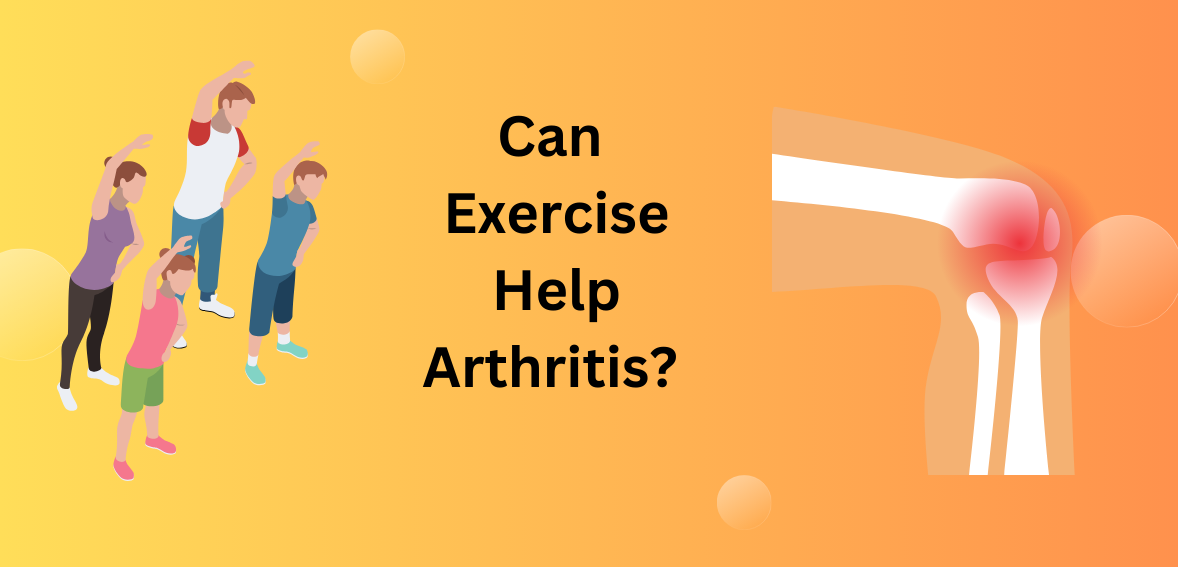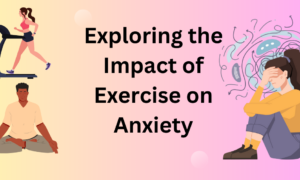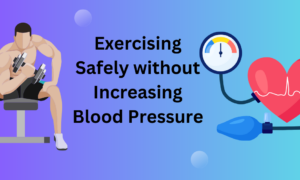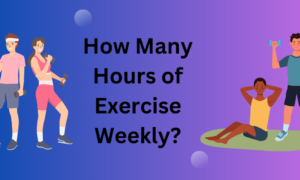Living with arthritis can be a daily battle. The stiffness, pain, and inflammation that often accompany this condition can make even the simplest tasks feel like monumental obstacles. But what if there was a way to improve your quality of life, reduce pain, and regain control over your joints?
Enter exercise – an unexpected ally in the fight against arthritis! Contrary to popular belief, physical activity can actually play a crucial role in managing arthritis symptoms and maintaining joint health. In this blog post, we will explore how exercise can benefit those with arthritis and provide valuable insights into recommended types of exercises, tips for exercising safely with arthritis, real-life success stories from individuals who have experienced remarkable improvements through exercise routines, as well as debunking some common misconceptions.
So grab a comfortable seat (or better yet – stand up!) and join us on this journey towards discovering how staying active could transform your experience with arthritis. Let’s dive right in!
How Exercise Can Benefit Those with Arthritis
Arthritis is a condition that affects millions of people worldwide, causing pain and stiffness in the joints. While it may seem counterintuitive to exercise when you’re already experiencing discomfort, research has shown that exercise can actually benefit those with arthritis in numerous ways.
One of the key benefits of exercise for arthritis is improved joint flexibility and range of motion. Regular physical activity helps to lubricate the joints and keep them mobile, reducing stiffness and allowing for greater ease of movement. This can make everyday tasks such as walking or climbing stairs much easier and less painful.
Exercise also helps to strengthen the muscles around the affected joints, providing better support and stability. Stronger muscles not only reduce stress on the joints but also help to prevent further damage or injury. By engaging in strength training exercises, individuals with arthritis can build up their muscle strength over time, leading to improved overall function.
In addition to these physical benefits, exercise has also been shown to have positive effects on mental well-being for those with arthritis. Engaging in regular physical activity releases endorphins – often referred to as “feel-good” hormones – which can help alleviate symptoms of depression or anxiety commonly associated with chronic pain conditions.
It’s important for individuals with arthritis to choose appropriate types of exercise that are gentle on their joints while still providing sufficient challenge. Low-impact activities such as swimming, cycling, or yoga are often recommended as they minimize stress on weight-bearing joints like knees or hips.
Remembering some tips before starting an exercise routine can be helpful too! It’s always a good idea to start slowly and gradually increase intensity or duration over time. Listening to your body is crucial – if something feels uncomfortable or painful during a particular exercise, it’s best to modify it or seek guidance from a healthcare professional specializing in arthritis management.
Real-life success stories serve as powerful reminders that staying active despite having arthritis is possible! Many individuals have found relief from symptoms through regular exercise routines. These stories can provide motivation and inspiration for those who may be hesitant to start
Recommended Types of Exercise for Arthritis
When it comes to managing arthritis, exercise can play a crucial role in maintaining joint flexibility, reducing pain, and improving overall quality of life. However, not all types of exercise are suitable for individuals with arthritis. It’s essential to choose activities that are low-impact and gentle on the joints.
One highly recommended form of exercise for arthritis is swimming or water aerobics. The buoyancy of the water helps to relieve pressure on the joints while still providing an effective workout. Additionally, aquatic exercises can help improve range of motion and strengthen muscles without putting excessive strain on vulnerable joints.
Another great option is cycling or using a stationary bike. This type of activity provides cardiovascular benefits without placing excessive stress on the joints. Cycling allows for smooth movement through a full range of motion while supporting body weight and minimizing impact.
Strength training exercises are also beneficial for individuals with arthritis as they help build muscle around the affected joints, providing added support and stability. Low-weight/high-repetition exercises such as bicep curls, leg lifts, and shoulder presses can be performed using resistance bands or light dumbbells.
Yoga is another fantastic choice as it combines gentle stretching with deep breathing techniques that promote relaxation and reduce stress levels. Many yoga poses focus specifically on increasing flexibility and strength in the joints affected by arthritis.
Before starting any new exercise regimen or program, it’s important to consult with your healthcare provider or a certified physical therapist who can provide guidance tailored to your specific needs and limitations due to arthritis.
Tips for Exercising with Arthritis
When it comes to exercising with arthritis, finding the right balance is key. It’s important to stay active to maintain joint flexibility and muscle strength, but it’s equally important to listen to your body’s signals and avoid overdoing it.
First and foremost, consult with your healthcare provider before starting any exercise regimen. They can provide guidance tailored specifically to your condition and help you determine which exercises are safe for you.
Low-impact exercises are generally recommended for people with arthritis. These include activities like swimming, water aerobics, walking, cycling on a stationary bike, or using an elliptical machine. These exercises put less stress on the joints while still providing cardiovascular benefits.
It’s also essential to warm up before exercising. Gentle stretching exercises can help loosen up stiff joints and prepare them for activity. Similarly, cooling down after exercise is crucial in helping prevent stiffness and reduce inflammation.
If certain movements or activities exacerbate your symptoms or cause pain during exercise sessions, modify or avoid them altogether. Listen to your body – if something doesn’t feel right or causes discomfort, stop doing it immediately.
Another tip is to pace yourself when exercising with arthritis. Start slowly and gradually increase intensity as tolerated. Taking breaks when needed ensures that you don’t strain your joints excessively.
Consider incorporating strength training into your routine as well. Strengthening the muscles around affected joints can provide added support and stability.
Remember that everyone’s experience with arthritis is unique; what works for one person may not work for another. Be patient with yourself as you find what types of exercise suit you best – there might be some trial and error involved!
Incorporating regular physical activity into your life can have a positive impact on managing arthritis symptoms and improving your overall quality of life – just make sure to do so under professional guidance!
Real Life Success Stories of Exercise and Arthritis
Meet Lisa, a 45-year-old woman who has been living with arthritis for over a decade. When she was first diagnosed, she thought her active lifestyle would come to an end. But through perseverance and the power of exercise, Lisa has proven that staying active is possible even with arthritis.
Lisa started slowly, incorporating gentle exercises like walking and swimming into her routine. She gradually increased the intensity and duration of her workouts, always listening to her body’s signals along the way. Over time, she noticed a significant improvement in her joint flexibility and overall strength.
Another success story is Tom, a retired athlete who developed arthritis in his knees after years of high-impact sports. He initially struggled with daily activities like climbing stairs or getting out of bed without pain. However, he refused to let arthritis hold him back.
Tom began working with a physical therapist who tailored an exercise program specifically for his needs. Through targeted exercises that focused on strengthening his quadriceps muscles and improving joint stability, Tom experienced significant relief from his symptoms. Today he continues to stay active by cycling regularly and participating in low-impact group fitness classes.
These are just two examples among many inspiring stories of individuals successfully managing their arthritis through exercise. Each person’s journey may be different but they all share one thing in common: determination to live life fully despite their condition.
Remember that everyone’s experience with arthritis is unique; what works for one person may not work for another. It’s important to consult with healthcare professionals before starting any new exercise regimen or making changes to your current routine.
While these success stories showcase the benefits of exercise for those living with arthritis, it is essential to remember that results can vary depending on individual circumstances. So don’t lose hope if you don’t see immediate improvements – consistency and patience are key when it comes to managing chronic conditions like arthritis.
By sharing these real-life stories, we aim to inspire and motivate those who may be hesitant about incorporating exercise into their arthritis management
Misconceptions about Exercise and Arthritis
1. Exercise worsens arthritis pain: One common misconception is that exercise can make arthritis pain worse. However, regular physical activity can actually help reduce joint pain and stiffness by improving flexibility and lubricating the joints.
2. Only high-impact exercises are beneficial: Another myth is that only high-impact activities like running or aerobics provide benefits for arthritis sufferers. In reality, low-impact exercises such as swimming, walking, and cycling can be just as effective in improving joint health without causing additional strain on the body.
3. Resting is better than exercising: Some people believe that resting is the best approach for managing arthritis symptoms. While it’s important to listen to your body and rest when needed, prolonged periods of inactivity can lead to muscle weakness and increased joint discomfort. Regular exercise helps strengthen muscles around the joints, providing added support.
4. You need expensive equipment or gym membership: Many believe that you need fancy gym equipment or a costly membership to exercise with arthritis. However, there are plenty of affordable options available such as home workout videos or simply going for walks outdoors.
5. It’s too late to start exercising if you have arthritis: It’s never too late to start an exercise routine, even if you have been living with arthritis for years. Studies show that physical activity at any age has numerous benefits including improved mobility, reduced inflammation, enhanced mood, and overall better quality of life.
Remember to always consult with your healthcare provider before starting any new exercise program tailored specifically for your condition!
Conclusion: Staying Active with Arthritis is Possible
It is clear that exercise can greatly benefit those who suffer from arthritis. Despite the pain and stiffness that often accompanies this condition, engaging in regular physical activity can help manage symptoms, improve joint function, and enhance overall quality of life.
By incorporating a variety of exercises into your routine – including low-impact activities such as swimming or cycling, strength training to support joint stability, and flexibility exercises to maintain range of motion – you can effectively manage arthritis symptoms and slow down its progression.
It’s important to remember that every person with arthritis is unique, so it’s crucial to consult with your healthcare provider before starting any new exercise program. They will be able to provide personalized recommendations based on your specific needs and limitations.
So don’t let arthritis hold you back! With the right approach and guidance from healthcare professionals, staying active while managing your condition is not only possible but highly beneficial. By taking control of your health through regular exercise, you’ll empower yourself to lead a fulfilling life despite having arthritis.
Remember – movement is medicine! So lace up those sneakers, grab a friend for support if needed, and get moving towards better joint health today. Your body will thank you for it!



























